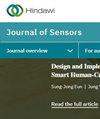Evasion Attacks on Deep Learning-Based Helicopter Recognition Systems
IF 1.1
4区 工程技术
Q3 ENGINEERING, ELECTRICAL & ELECTRONIC
引用次数: 0
Abstract
Identifying objects in surveillance and reconnaissance systems with the human eye can be challenging, underscoring the growing importance of employing deep learning models for the recognition of enemy weapon systems. These systems, leveraging deep neural networks known for their strong performance in image recognition and classification, are currently under extensive research. However, it is crucial to acknowledge that surveillance and reconnaissance systems utilizing deep neural networks are susceptible to vulnerabilities posed by adversarial examples. While prior adversarial example research has mainly utilized publicly available internet data, there has been a significant absence of studies concerning adversarial attacks on data and models specific to real military scenarios. In this paper, we introduce an adversarial example designed for a binary classifier tasked with recognizing helicopters. Our approach generates an adversarial example that is misclassified by the model, despite appearing unproblematic to the human eye. To conduct our experiments, we gathered real attack and transport helicopters and employed TensorFlow as the machine learning library of choice. Our experimental findings demonstrate that the average attack success rate of the proposed method is 81.9%. Additionally, when epsilon is 0.4, the attack success rate is 90.1%. Before epsilon reaches 0.4, the attack success rate increases rapidly, and then we can see that epsilon increases little by little thereafter.对基于深度学习的直升机识别系统的规避攻击
用人眼识别监视和侦察系统中的物体是一项挑战,这说明采用深度学习模型识别敌方武器系统越来越重要。这些系统利用在图像识别和分类方面表现出色的深度神经网络,目前正在进行广泛的研究。然而,必须承认的是,利用深度神经网络的监视和侦察系统容易受到对抗性示例的影响。此前的对抗性示例研究主要利用公开的互联网数据,而针对真实军事场景中特定数据和模型的对抗性攻击研究却严重缺乏。在本文中,我们介绍了一个为二元分类器设计的对抗示例,该分类器的任务是识别直升机。我们的方法生成了一个被模型错误分类的对抗示例,尽管它在人眼看来毫无问题。为了进行实验,我们收集了真实的攻击直升机和运输直升机,并将 TensorFlow 作为首选的机器学习库。实验结果表明,建议方法的平均攻击成功率为 81.9%。此外,当 epsilon 为 0.4 时,攻击成功率为 90.1%。在ε达到 0.4 之前,攻击成功率迅速上升,之后我们可以看到ε在逐渐增加。
本文章由计算机程序翻译,如有差异,请以英文原文为准。
求助全文
约1分钟内获得全文
求助全文
来源期刊

Journal of Sensors
ENGINEERING, ELECTRICAL & ELECTRONIC-INSTRUMENTS & INSTRUMENTATION
CiteScore
4.10
自引率
5.30%
发文量
833
审稿时长
18 weeks
期刊介绍:
Journal of Sensors publishes papers related to all aspects of sensors, from their theory and design, to the applications of complete sensing devices. All classes of sensor are covered, including acoustic, biological, chemical, electronic, electromagnetic (including optical), mechanical, proximity, and thermal. Submissions relating to wearable, implantable, and remote sensing devices are encouraged.
Envisaged applications include, but are not limited to:
-Medical, healthcare, and lifestyle monitoring
-Environmental and atmospheric monitoring
-Sensing for engineering, manufacturing and processing industries
-Transportation, navigation, and geolocation
-Vision, perception, and sensing for robots and UAVs
The journal welcomes articles that, as well as the sensor technology itself, consider the practical aspects of modern sensor implementation, such as networking, communications, signal processing, and data management.
As well as original research, the Journal of Sensors also publishes focused review articles that examine the state of the art, identify emerging trends, and suggest future directions for developing fields.
 求助内容:
求助内容: 应助结果提醒方式:
应助结果提醒方式:


